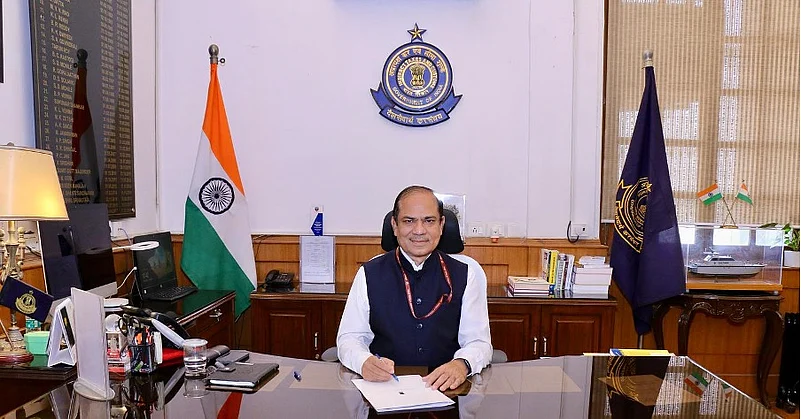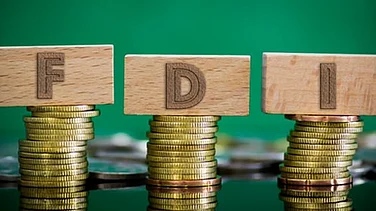Concessions provided on customs duty for several items in the Union Budget aim to diversify India’s supply chain and protect the domestic industry, ensuring global competence, said Sanjay Kumar Agarwal, chairman of Central Board of Indirect Taxes and Customs (CBIC), in an interview with Outlook Business.
The CBIC chief talked in great length about how these concessions were in tandem with the ongoing manufacturing practices in the country.
Among several announcements, a decision has been taken by the Ministry of Finance to exempt duties on 25 critical minerals to use them in several industries such as electronics and energy.
“There was a proposal for some other minerals also, but their rates have not been touched because there is substantial manufacturing capacity in the country. That is the thought process for bringing the proposals in the budget,” the chief said.
Other than the vision behind these relaxations, he also shared his views on issues of compliance related to indirect taxes and rationalisation of goods and services tax (GST) slabs.
Edited Excerpts:
Could you explain the rationale behind the selection of the chosen items for customs duty relaxations and the coherence it will have with “Make in India” and production-linked incentive (PLI) program?
We received a lot of representations from various chambers, industries, and concerned ministries. After these proposals were examined, we also took feedback from the user industry of these products. There are items where there could be an inversion of duty. The final product might be subject to a lower rate of duty, where the input may have a higher rate of duty. All these aspects are kept in mind, and then the decision is taken on what is to be exempted and where the rate is to be lowered or increased.
An example is of the proposal we received for reduction of duty on critical minerals, which are not mined in the country but are very critical for the manufacturing sector. A decision was taken to bring a budget proposal for exempting such 25 critical minerals, and to boost their processing and further use them in industries of electronics, telecommunication, renewable energy, space, and defense. There was a proposal for some other minerals also, but their rates have not been touched because there is substantial manufacturing capacity in the country. That is the thought process for bringing the proposals in the budget.
Similarly, in the export sector, there are items with huge export potential where India is performing very well. The rate of duty on shrimp feed was reduced from 15 per cent to 5 per cent, to promote frozen shrimp exports. But since there is some production capacity for shrimp feed in the country, the raw materials have now been fully exempted.
Another objective is also to diversify the supply chain and protect the domestic industry. The rate of duty has been raised from 7.5 per cent to 10 per cent on ammonium nitrate, whose import was impacting the domestic industry. In case of flex banners, the rate has been increased to 25 per cent. Where the item is not good for the environment, it was also a very cheap import from China.
Besides, for mobile phones, the rate of duty was raised to 20 per cent. It was also kept high on certain parts to deepen the value chain and increase their manufacturing in the country. Now since the ecosystem has evolved and they are being domestically produced, it is time to bring the rates back to the normal level so that industry remains competitive. It is not that once we have increased the rate of duty, it will remain at that level forever.
How do you plan to strike a balance between the cost of these concessions and supporting the free trade agreements (FTA)?
When negotiations under FTAs are carried out, we try to ensure that we do not end up giving concession on items, which are under phased manufacturing program or under a PLI scheme. On one end, we give them (industry) some kind of protection so that manufacturing ecosystem is established. On the other, if we reduce the duty rate under a FTA for that particular item, that move would be in a diametrically opposite direction. We keep this thing in mind while offering something under a FTA at a concessional rate.
Secondly, we have to be mindful that these negotiations are carried out not only on the duty front but also on what is being offered by the partner. That can be in terms of services or some investment. This is a complex process.
While announcing the developments in indirect taxes, the finance minister talked about further simplifying the tax structure. Taking the plight of small businesses into account, what reforms can we expect going forward?
Many recommendations were made in the last GST council meeting. Notices were issued to the taxpayers in MSME (micro, small, and medium enterprises) sector in the initial years, due to lapses under Section 73. The council has recommended to waive off these penalties given they provide the duty demanded in the notice by the notified date.
Another relaxation is the change in the time period for ITC (input tax credit). And to give effect to this relaxation, an amendment in law has been proposed in the finance bill. We would want to reduce the pre-deposit rate for both first and second appeal to ease out the cash flow.
For how long do you see the trend of GST collections growth outpacing nominal gross domestic product (GDP) growth? If we consider the trend to remain the same till high level of compliance is reached, then could you share any estimate you have for this?
In last three or four years, the compliance levels have gone up substantially. We have also seen improvements in returns and ITC availability. The introduction of the 2B (GSTR-2B) return has been a key development. This return determines the amount of ITC available to taxpayers and is now auto-populated in their 3B (GSTR-3B) return.
On the output side, the GSTR-1 filed by the taxpayer determines their output liability and gets auto-populated in their 3B return. But these fields are currently editable to accommodate certain requirements. Once GSTR-1 is filed, no amendments can be made.
To address this, an optional GSTR-1A has been provided. This can be filed before the 3B return. Taxpayers can use GSTR-1A to make any necessary amendments to their GSTR-1 and provide additional information. This process ensures that taxpayers can easily justify the auto-populated entries in their 3B return.
This will eliminate discrepancies and reduce the need for the tax department to seek clarifications from taxpayers. Consequently, this will significantly decrease litigation with taxpayers. These measures have been taken for simplification of compliances by the taxpayers.
In addition to that, the council is also looking into rationalisation. A GoM (group of ministers) was set up for this purpose, which was reconstituted due to changes in its composition. This GoM will present its report, and once it is submitted, the council will make the necessary recommendations. Until those are made, it is difficult to come up with an estimate for this trend.
But what is the current status on rationalisation of the GST slabs? How much of more technical work is left and does it look achievable in the near term given the political sensitivity around it?
Rate rationalisation exercise means many things. One is bringing down the number of slabs, and second is putting together the commodities falling under the same basket under one rate to avoid classification and rate disputes.
Third is revenue neutrality, which is the technical part. This exercise cannot be carried out without keeping the revenue neutral rate in mind. So, now when it happens, the rates will have to be kept at a level where revenue neutral rate target is met. I think it should happen in the near future because it is important for everyone.



























